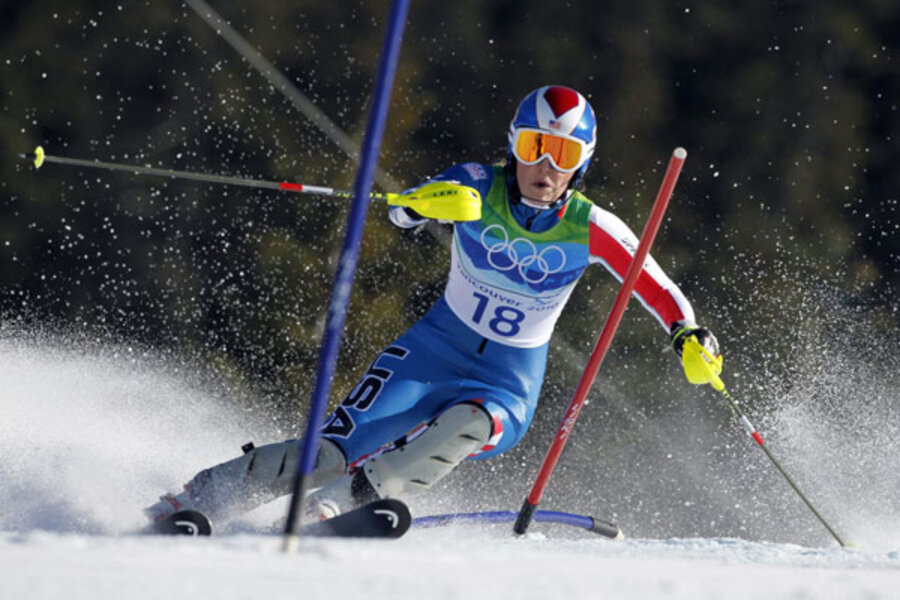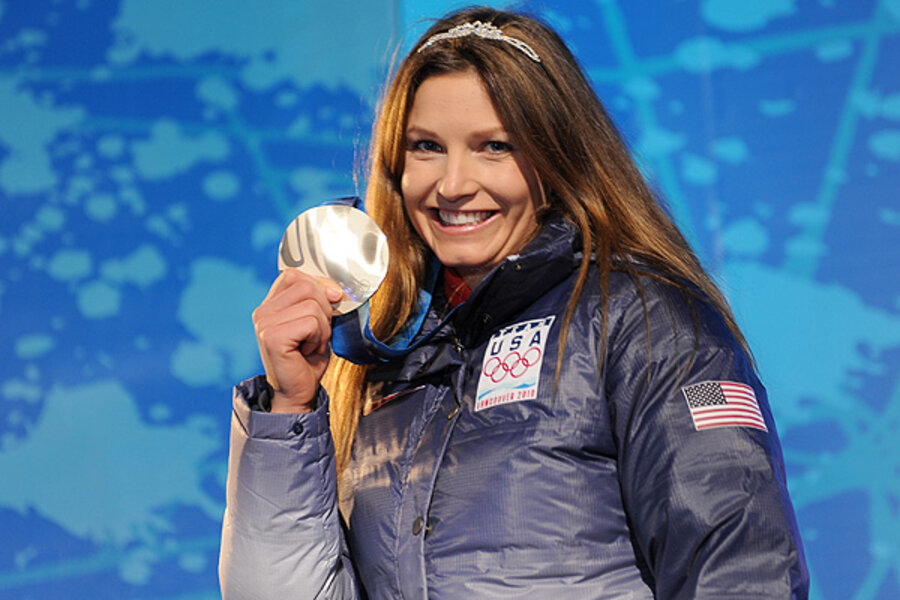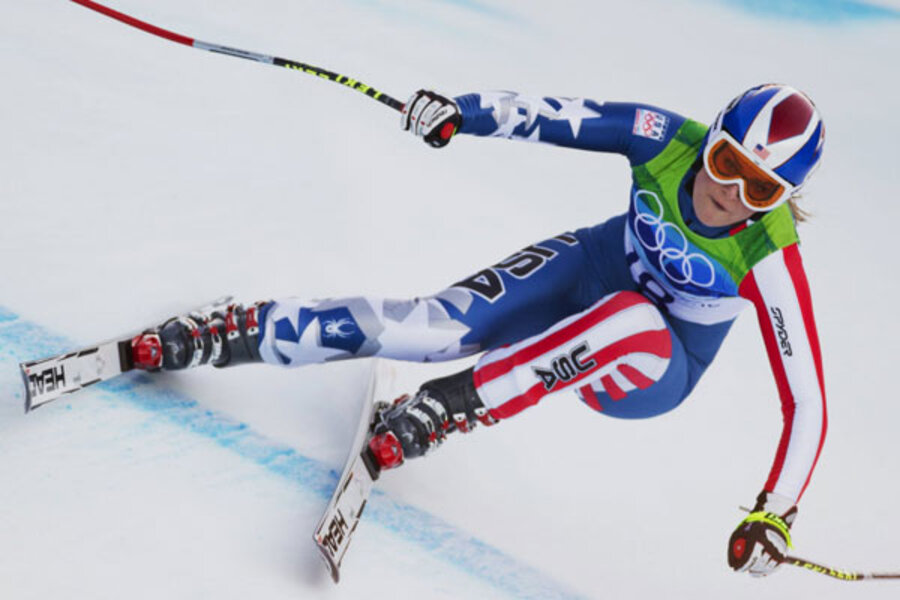Lindsey Vonn looks to build on US skiing's best-ever Olympics
Loading...
| Vancouver, British Columbia
When NBC went about planning its Winter Olympic coverage, this was what it was hoping for.
The women’s super-G has arrived, and an American woman still has a chance to win a medal in all five alpine skiing events.
That woman, however, is not Lindsey Vonn.
It is Julia Mancusco, the exuberant, tiara-wearing skier whose Olympic medal-winning streak actually dates back to Turin, where she won the final race of the 2006 Games.
And she is not the only one. Partly atoning for his zero-medal, multi-party performance in Turin, Bode Miller has won a medal in both of the opening events in Whistler.
Still, today is expected to be about Vonn, who has clinched the title of best women’s super-G skier this season with two World Cup races to spare.
But the success of the US ski team around her is stunning. Realistically, no one is going to win five medals, but as a team, America has won six medals in four events, making this the best Olympic performance by the United States in the history of alpine skiing.
And Americans are strong contenders in races still to come.
The cornerstones of success
The success is founded on Miller and Vonn, who sit at Nos. 1 and 2 for all-time World Cup wins by an American. Each has also won two World Cup overall titles, the prize awarded to the best all-around skier in the world that season. Vonn is well-positioned to win a third this year.
Together, their results have infused the US team with confidence. Yet, perhaps just as important, they have also helped create a sense of team unity, transforming the pressure of Olympic skiing into an appreciation of the possible.
“Our team is feeding off each other,” said Miller after he and teammate Andrew Weibrecht took silver and bronze in the super-G Friday. “We’re letting go of attention on results and just skiing in that inspired way – and we’re seeing a level of US skiing that we haven’t seen in a long time.”
That these words came from Miller are proof of how dramatically the course of his career has changed in the past six months.
Retired, exhausted, and two years removed from a messy divorce from the US ski team, Miller appeared to have nowhere to go last summer. His results in the season just ended had been poor, and the team he had put together to support him on the World Cup circuit had splintered.
If Miller’s career was not finished, it at least appeared to be in steep decline.
Miller's renaissance
But that’s not how US coach Sasha Rearick saw it. “What I thought was possible is that he could put down inspiring runs, and that’s why I wanted him back,” he said Friday.
That one word – “inspiring” – has been the spark that has pulled Miller from the margins of skiing to a two-time medalist in these Games.
“That’s one of the things I wanted to bring back,” Miller said Friday.
It has already had an effect on Weibrecht. “With top 15 results on some of the world's most daunting courses, he'd proven that he was talented, but maybe showed that he still needed to take that extra step – attacking the course with sheer abandon – to go from top 10 or top 15 to top 3,” writes Shauna Farnell, who is covering the Games for Ski Racing magazine, in an e-mail.
Weibrecht said he took his inspiration from an unusual source: the fact that Miller has crashed out of more than 150 World Cup races. Likening Weibrecht to himself, Bode says: “[Andrew] makes a lot of mistakes, too. He goes too hard sometimes.”
But having the examples set by Miller, Vonn, and Mancuso “have helped us to believe in ourselves,” Weibrecht said.
Mancuso's 'Olympic magic'
What, exactly, has helped Mancuso to believe in herself after three on-again, off-again years, however, is a mystery.
Mancuso is an “extremely talented skier, but until these Games, she has made only small, somewhat inconsistent steps on her way to getting back to the winning form she was in three years ago,” writes Farnell.
In particular, her silver in the combined Thursday was “jolting,” given Mancuso’s past lack of success in the slalom. But her sensational slalom run in the combined showed that the skill “was lying dormant somewhere inside of her and was suddenly awakened at the Games,” writes Farnell.
She would not be the first to be transformed by what Farnell calls “Olympic magic.”
Miller puts it another way: When Austrians tell you about being inspired by skiing as a kid, they’ll talk about the hundreds of World Cup races they’ve seen, how their uncle skied in a World Cup. But for Americans, it’s all about the Olympics.
“Americans more so than other nations are inspiration-driven” at the Olympics, he said.
And this year, that is true of Miller, too. “Bode is using the energy of the Olympics to have his best races all year,” said coach Rearick. “He said he was going to peak here, and he’s doing what he set out to do.”
Rearick added: “I never thought about where we’d be except that we’d come out and ski the way we can – that we’d put down runs we can be proud of."
-----
Follow the Olympics blow-by-blow on Twitter feeds by Christa and Mark.







